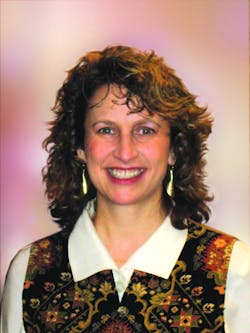Life sciences seen as key at SPIE Photonics West '14

Again and again at SPIE Photonics West 2014 (February 1–6), I found evidence of the importance of life sciences applications among optics and photonics suppliers and systems developers.
Despite setbacks imposed by the U.S. government's "sequester" of 2013, biophotonics companies are optimistic and see opportunity. This was evident across the exhibit hall at both the BiOS and Photonics West expos. A good example is the fact that Texas Instruments (TI; Dallas, TX) has identified biomedicine as a key application domain for its DLP technology, which it says can reduce size and cost for biospectroscopy and improve accuracy and speed in a handheld vein-viewing system.
Among optics suppliers, Semrock (Rochester, NY) sees medical diagnostics, point-of-care, and optogenetics applications as part of a "big growth engine" in life sciences, and Edmund Optics (Barrington, NJ) emphasized bio among targets for its service to provide customized products within three weeks.
Among laser makers, Coherent (Santa Clara, CA) said while the scientific area is smaller than some of its other market segments, it is "critical." And Newport Spectra-Physics (Santa Clara, CA) cast its vote for bioimaging and optogenetics with its HighQ-2 single-wavelength, air-cooled laser (designed to "fit well with RFPs [requests for proposals]") and its Spirit-NOPA ultrafast amplifier that delivers tunable, high-repetition-rate pulses in widths to sub-20 fs—"ideal for ultrafast spectroscopy and advanced science applications." NKT Photonics (Birkerød, Denmark), supplier of photonic-crystal fiber to laser manufacturers, introduced a laser of its own for bioimaging, among other applications: The aeroPULSE modelocked fiber source supplies up to 40 W of output power to address increased interest in multiphoton microscopy, for instance. BioPhotonic Solutions (East Lansing, MI) described work to leverage picosecond lasers to operate in the femtosecond range, with dramatic performance and cost impact for applications such as laser cataract surgery. And Mobius Photonics (Mountain View, CA) explained that it is "packaging product in a way that says to the biologist, 'you don't have to worry.'"
Among makers of detectors, Hamamatsu (Bridgewater, NJ) also emphasized a focus on making technology more accessible, and Corning Advanced Optics (Keene, NH) sought opportunity in bio for its high-performance hyperspectral imaging systems. imec (Leuven, Belgium) showcased bio with its own high-performance hyperspectral imaging solution, which integrates spectral filters on a commercially available CMOS sensor—with impressive size and cost advantages. Another imec innovation offering "great promise for many biomedical applications" is lens-free holographic imaging.
Our official report on BiOS/Photonics West (see p. 14) lists other examples, but I'll end here by noting that at the 45th anniversary celebration of the supercontinuum effect, discoverer Robert Alfano said, "the major applications I see [for the future] are in medicine." Those wanting an example of why need look no further than Bioptigen's (Research Triangle Park, NC) Envisu XHR: "The only OCT system in the world capable of acquiring images with 1.5 × 1.5 × 1 μm voxel size," thanks to supercontinuum light.
About the Author

Barbara Gefvert
Editor-in-Chief, BioOptics World (2008-2020)
Barbara G. Gefvert has been a science and technology editor and writer since 1987, and served as editor in chief on multiple publications, including Sensors magazine for nearly a decade.